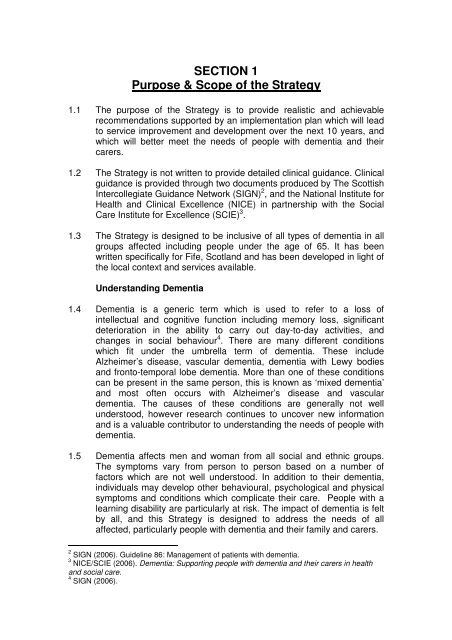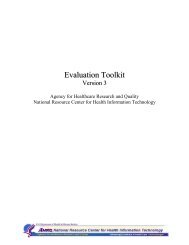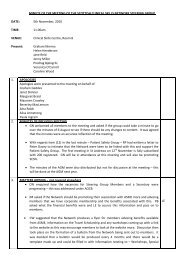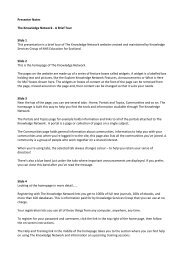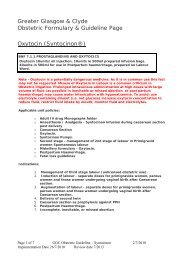The Fife Dementia Strategy: 2010 â 2020 - The Knowledge Network
The Fife Dementia Strategy: 2010 â 2020 - The Knowledge Network
The Fife Dementia Strategy: 2010 â 2020 - The Knowledge Network
You also want an ePaper? Increase the reach of your titles
YUMPU automatically turns print PDFs into web optimized ePapers that Google loves.
SECTION 1<br />
Purpose & Scope of the <strong>Strategy</strong><br />
1.1 <strong>The</strong> purpose of the <strong>Strategy</strong> is to provide realistic and achievable<br />
recommendations supported by an implementation plan which will lead<br />
to service improvement and development over the next 10 years, and<br />
which will better meet the needs of people with dementia and their<br />
carers.<br />
1.2 <strong>The</strong> <strong>Strategy</strong> is not written to provide detailed clinical guidance. Clinical<br />
guidance is provided through two documents produced by <strong>The</strong> Scottish<br />
Intercollegiate Guidance <strong>Network</strong> (SIGN) 2 , and the National Institute for<br />
Health and Clinical Excellence (NICE) in partnership with the Social<br />
Care Institute for Excellence (SCIE) 3 .<br />
1.3 <strong>The</strong> <strong>Strategy</strong> is designed to be inclusive of all types of dementia in all<br />
groups affected including people under the age of 65. It has been<br />
written specifically for <strong>Fife</strong>, Scotland and has been developed in light of<br />
the local context and services available.<br />
Understanding <strong>Dementia</strong><br />
1.4 <strong>Dementia</strong> is a generic term which is used to refer to a loss of<br />
intellectual and cognitive function including memory loss, significant<br />
deterioration in the ability to carry out day-to-day activities, and<br />
changes in social behaviour 4 . <strong>The</strong>re are many different conditions<br />
which fit under the umbrella term of dementia. <strong>The</strong>se include<br />
Alzheimer’s disease, vascular dementia, dementia with Lewy bodies<br />
and fronto-temporal lobe dementia. More than one of these conditions<br />
can be present in the same person, this is known as ‘mixed dementia’<br />
and most often occurs with Alzheimer’s disease and vascular<br />
dementia. <strong>The</strong> causes of these conditions are generally not well<br />
understood, however research continues to uncover new information<br />
and is a valuable contributor to understanding the needs of people with<br />
dementia.<br />
1.5 <strong>Dementia</strong> affects men and woman from all social and ethnic groups.<br />
<strong>The</strong> symptoms vary from person to person based on a number of<br />
factors which are not well understood. In addition to their dementia,<br />
individuals may develop other behavioural, psychological and physical<br />
symptoms and conditions which complicate their care. People with a<br />
learning disability are particularly at risk. <strong>The</strong> impact of dementia is felt<br />
by all, and this <strong>Strategy</strong> is designed to address the needs of all<br />
affected, particularly people with dementia and their family and carers.<br />
2 SIGN (2006). Guideline 86: Management of patients with dementia.<br />
3 NICE/SCIE (2006). <strong>Dementia</strong>: Supporting people with dementia and their carers in health<br />
and social care.<br />
4 SIGN (2006).


